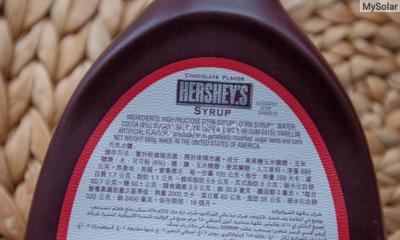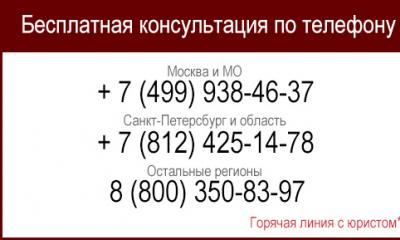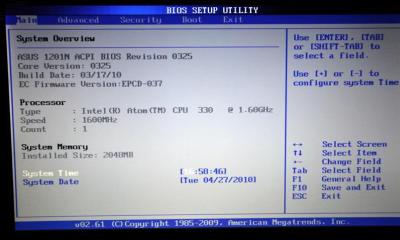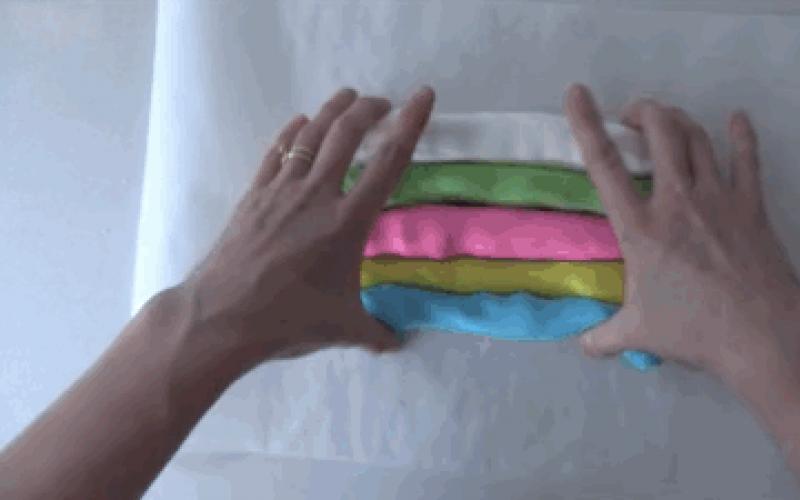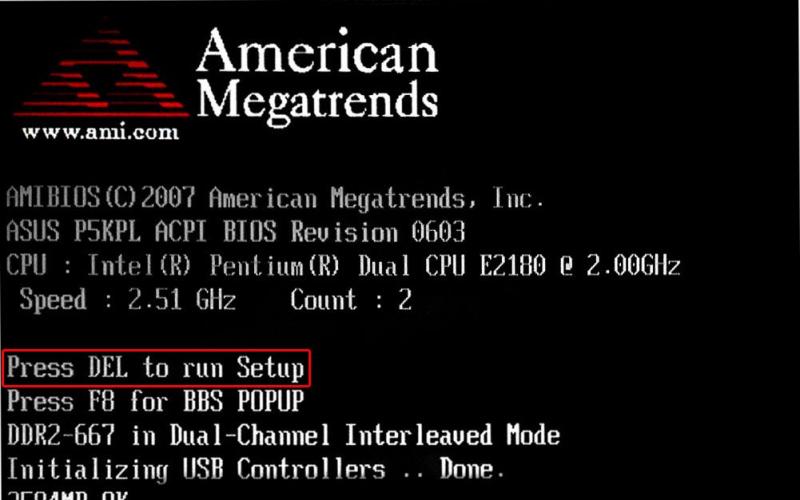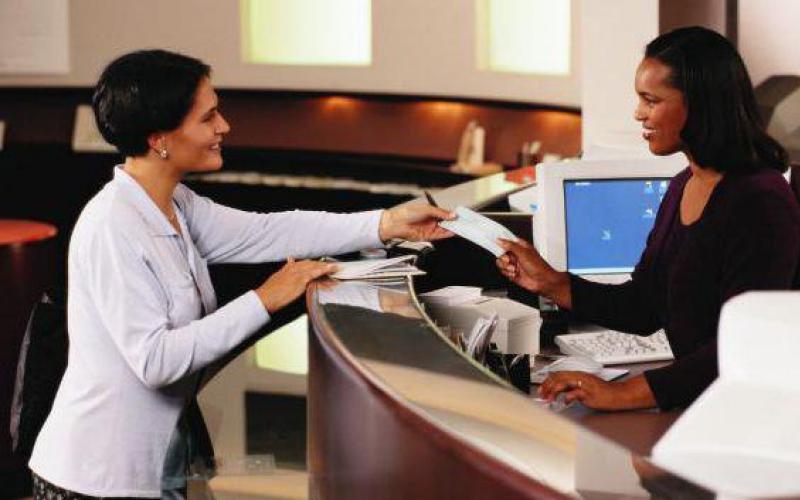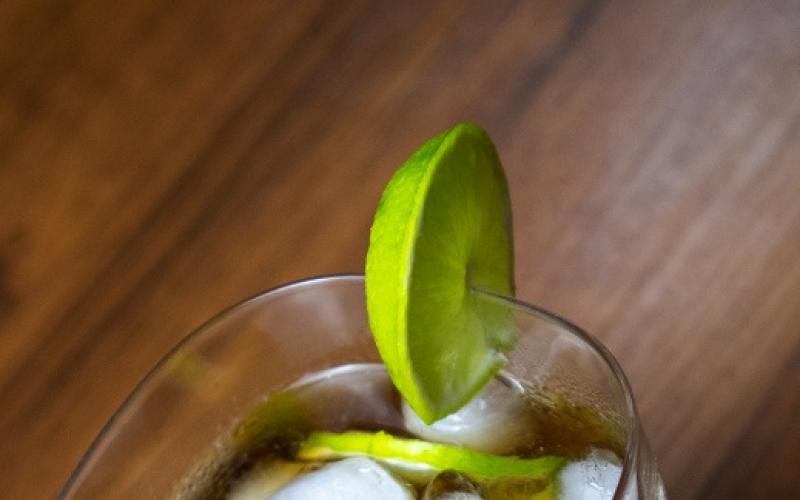Introductory Lecture
by discipline
"Elective courses
in physical culture"
physical culture and sports are implemented:
on
- "Physical culture" in the amount of at least 72
academic hours (2 credits);
- Elective courses in physical culture in
not less than 328 hours (0 credits).
Specified
academic
clock
are
mandatory. "Physical culture" is held
in the form of lectures.
Elective courses in physical
culture are carried out in the form
physical training by type
sports: athletics, volleyball,
table tennis, badminton,
ski training, gymnastics, etc. Study groups are formed after a medical examination
in accordance with the order of the KSPU them. V.P.
Astafieva, taking into account the state of health
involved.
The number of the main group is 15
human;
special medical group - 8-12 people.
Students released on condition
health from physical activity, prepare and
defend abstract work on topics,
proposed by the Department of Physical Culture and
health, at the beginning of each semester. A student who regularly participates in sports
sections and having test results on
physical fitness excellent, or excellent and
good, or good, can attend classes freely
disciplines Elective courses in physical culture.
The basis for free attendance
Elective courses in physical culture is
personal statement of the student, to which are attached:
certificates of regular attendance at the sports section
KSPU them. V.P. Astafiev or educational
organizations of a sports orientation of the subject of the Russian Federation in
the current academic year,
physical fitness test results for
excellent, or excellent and good, or good. The department has:
2 gyms and a tennis hall at Vzletnaya 20;
2 at Marx 100;
ski base.
Conditions for getting credit
a) attending all classes (or practicing
missed);
b) passing tests: running 100m, 2/3km, push-ups,
jump rope, pull-ups, press, long jump with
places;
d) abstract (requirements for writing on the site
departments)
c) classes in sections (as agreed). All disputes are resolved in
following sequence:
Leading Lecturer - department
(Popovanova N.A., room 1-33; Tue, Thu 14:00 18:00). Cell phones, players
time to clean up.
student late or not
admitted - fulfills
pass. Medical examination is carried out by order of
faculties and groups;
students who fail the medical examination
classes will not be allowed.
Help for SMG (special
medical group) are transferred to the leader
teacher.
After medical examination (October) final
completing SMG.
When transferring to another teacher
debts are transferred. Physical education is carried out only on
1-2-3 courses (tests in 2, 4 and 5 semesters),
further only independently;
If a student is ill, then a certificate
to the lead teacher to assure
first-aid post (Lebedeva, 80) - classes are not
are being worked out
After a long illness,
The lead teacher decides the abstract.
Testing takes place in Stadium 2
once a year - in autumn (from mid-September) and
spring (from mid-May). All classes are in sportswear only,
shoes.
Call for classes for students; from class
for the teacher 60 min.
No independent departures from classes,
only with the permission of the teacher
Warm up is a must.
Latecomers are not allowed! Should not be left in
locker rooms valuables or
money can be deposited
teacher.
There is a security issue
of things!
Forgotten things to pick up from the box in
teaching!)
Sections: Sports at school and children's health
The program of the elective course in physical culture “OFP” was developed for students of grade 9 of the profile level, taking into account the physical development of students, the possibilities of the sports base and based on the requirements for students graduating from basic general education and is designed for 34 hours or 1 hour per week.
Purpose: to increase the motor activity of students, the formation of the foundations of a healthy lifestyle, the general improvement of the body.
- to teach the student how to creatively apply the acquired knowledge, skills and abilities to maintain high level physical and mental performance, health status, improve the formed competencies;
- improvement of specific motor actions, development of motor abilities, formation of skills to train independently and carry out physical culture and health and sports activities; ?
- enable the student to realize his interest in the subject;
- clarify the readiness and ability of the student to master the chosen subject at an advanced level;
- create conditions for preparing for the elective exam in the subject “Physical Education”;
- to enable students to use the acquired knowledge in their future life and practical activities.
The methodological basis of this program of the elective course is the Educational standards of the main general education in physical education (basic and profile level).
The system of arrangement of the material, the completeness of the presentation of information, the nature of the selection of material are aimed at achieving the educational, educational, informational goals outlined in the State Standard: to improve health, promote harmonious development, acquire the necessary knowledge in the field of physical culture and sports, promote the education of moral and volitional qualities, development of mental processes and personality traits.
The material and technical base of the school makes it possible to include classes in the following sports into the designated course: athletics, volleyball, basketball, table tennis, gymnastics with elements of acrobatics, shaping.
This working programm is a type 2 program, since the number of hours allotted for the development of educational material differs significantly from that in the program of the authors V.I. Lyakh and A.A. Zdanevich. In addition, in the proposed program, the educational material is supplemented with such sections as "Table Tennis" and "Shaping", and the material of the section "Basics of knowledge about physical culture" is studied in the context of a particular sport and is of key importance in the applied nature of this elective course.
1. Fundamentals of knowledge
- features of the development of the chosen sport;
- pedagogical, physiological and psychological bases of teaching motor actions and education of physical qualities, modern forms construction of classes and systems of physical exercises with different functional orientation;
- biodynamic features and content of physical exercises of a general developmental and corrective orientation, the basics of their use in solving problems of physical development and health promotion;
- age-related features of the development of leading mental processes and physical qualities, the possibility of forming individual traits and personality traits through regular physical education;
- psychofunctional features of one's own organism;
- individual ways to control the development of the adaptive properties of the body, improve health and improve physical fitness;
- ways of organizing independent physical exercises with different functional orientations, rules for the use of sports equipment and equipment, principles for creating simple sports facilities and grounds;
- personal hygiene, injury prevention and first aid during physical exercise.
2. Athletics
- Running at a steady pace: 20-25 minutes. (boys), 15–20 min. (girls);
- Running at a variable pace: 10-15 minutes.
3. Sports games:
Volleyball
- player stances and movements;
- passing the ball;
- bottom feed;
- receiving the ball after serving;
- two-sided game;
- direct attack;
- single blocking.
Basketball
- standing, moving, stopping, passing and catching the ball;
- dribbling with the right and left hand;
- throwing the ball one and two from a place and on the move.
4. Gymnastics with elements of acrobatics
- vault with legs bent;
- acrobatics: rolls back; stand on the shoulder blades, turns to the side; two somersaults forward; jump up bending over.
5. Table tennis
- movement;
- hitting and serving left and right;
- direct blows with rotation;
- Single player game.
6. Shaping
- general impact exercises;
- exercises for the abdominal muscles;
- exercises for the muscles of the back;
- exercises for the gluteal muscles;
- exercises for the abductor muscles of the thigh;
- hip extensor muscles;
- exercises for the muscles of the upper shoulder girdle;
- development of various muscle groups with a change in dosage in terms of time, quantity and intensity of exercise.
Requirements to prepare students:
At the end of the program of the course "PPP", students must demonstrate the following knowledge :
Features of individual physical culture and sports;
Basic concepts of a healthy lifestyle;
Fundamentals of sports hygiene;
Dosage of individual physical culture and sports.
Motor skills and abilities:
Technically correct to perform the basic movements in the proposed sports;
Demonstrate the performance of an individually designed set of general physical training exercises.
Basic step - basic step
Step-touch - side step
Double Step-touch - two side steps
Step-tap - step touch
Step-lift - step max
Step-front - move forward
Step-back - swing back
Step-side - swing to the side
Step-curl - step overwhelm
Step-kick - step kick
Step-plie - step squat
Scoop - side step
Grape wine - cross step
Knee lift or Knee up - knee lift
Kick - leg swing
Low kick - shin kick
Jumping jack - jump
Twist jump - jump on two legs
Pendulum - changing the position of the legs with the help of jumps
lunge - lunge
March - march
Marching - walking in one place
Walking - walking in different directions
Mambo - step with alternating "removal" of legs in the direction back and forth
Rock step - a step with alternate "carrying out" of the legs in a diagonal direction
V-step - the movement of the legs that are associated with the letter "V
Straddle - walking, in which you step with your right foot to the right
Cross - cross step
Cha-cha-cha - a triple step that is part of the dance movement
Polka is a simple variation of the polka dance move.
V-mambo - a combination of two steps V-step and Mamb
Athletic gymnastics can be done all answers are correct.
Athletic gymnastics goes well together all answers are correct.
Tennis grew out of badminton.
More than 100 years ago, an enterprising ..... registered the coined name "Ping-Pong" John Jaques.
IN Ancient Greece used exercises with halters - a prototype dumbbell.
As weights in athletic gymnastics is used all answers are correct.
The most important specific indicators of a physically perfect person of our time are all answers are correct.
A sport formed on the foundation of recreational aerobics, which combines dance moves under musical accompaniment high pace and power elements of varying complexity sports aerobics.
The volleyball court is conditionally divided into 6 zones.
Volleyball net height for men 243 cm.
Women's volleyball net height 224 cm.
For playing volleyball instead of the ball used rubber bladder.
Task ((1)) TK1. hardening by the sun Vitamin D is produced in the skin.
Task ((1)) TK1. After classes at the university and lunch ... must be spent on rest 1.5-2 hours.
Task ((1)) TK1. The following subjective factors influence the formation of motives that encourage students to self-study and active physical culture and sports all answers are correct.
Task ((1)) TK1. Systematic application of water procedures a reliable prophylactic against the harmful effects of various accidental coolings of the body.
Table tennis player who must first hit the ball in a rally "Server".
yoganestics program of classes with the use of roller skates indoors on a special surface.
Each rally of the ball in table tennis is tempered by assignment one point to one or another player (team).
Number of players on a volleyball team 6 .
Number of replays in table tennis unlimited.
The football team consists out of 11 players.
The International Volleyball Federation was founded in 1947.
IOC - International Olympic Committee.
The ball scored by a football player in the goal of his team own goal.
Table tennis ball Orange.
Reliable support of the human body skeleton.
The name of the last publication in our country of the book by K. Cooper Aerobics for good health.
Building muscle mass in athletic gymnastics of all parts of the body with a health-improving orientation wellness stage.
Deceptive movements in football are performed in direct combat with an opponent feints.
One of the most popular and massive collective sports games football.
One of the oldest sports games in the world badminton.
The optimal height of the Step platform, which is used in a recreational aerobics class 10-15 cm.
Volleyball learning begins from the study of racks and movements.
Regular football time 2 halves of 45 minutes.
The main attacking and defensive action in the game of table tennis hit.
Points in table tennis are awarded to the player in the following cases all answers are correct.
Period of time in table tennis when the ball is in play "Joke".
According to modern international rules, established in 2001, each table tennis game lasts up to 11 points.
When playing the ball in volleyball, it is allowed to perform 3 touches.
The size of the volleyball court is 9x18 m.
The birthplace of athleticism Ancient Greece.
Draw, the result of which in table tennis is counted "Point".
free guard in volleyball "libero".
The system of physical exercises using special weights athletic gymnastics.
Soviet football players Olympic champions 1956 and 1988.
Modern health aerobics is associated with the name Cannet Cooper.
The ability of a person to most rationally master new motor actions and successfully deal with changing conditions dexterity.
Step aerobics is exercises performed on a special platform.
This is how a football commentator usually talks about the team in whose stadium the match takes place. home team.
Flexibility exercises are stretching.
Physical exercise with weights make muscles stronger, joints more mobile, the body is more resilient.
The football player who in 1988 was recognized as the best goalkeeper in the world Rinat Dasaev.
Net playing time in football is 55-60 min.
A stage in athletic gymnastics aimed at achieving a certain level of strength developmental stage.
A stage in athletic gymnastics aimed at creating the desired physique relief and body shaping formative stage.
This is taken into account when a player is called the top scorer. goals scored.
Publication date 03/16/2017
"Elective courses in physical culture" for students in non-specialized (creative) higher education educational institution
Somkin Alexey Albertovich
Konstantinov Sergey Alexandrovich
Saint Petersburg state institute cinema and television, St. Petersburg
Annotation: The article analyzes the content of the discipline "Elective courses in physical culture" for students of a non-specialized (creative) higher educational institution - St. Petersburg State Institute of Film and Television. Particular attention in the publication is given to elective courses in the areas of health-improving physical culture (fitness), physical activity and physical fitness of students.
Keywords: "Elective courses in physical culture", Federal State Educational Standard, creative higher educational institution, students, department of physical education, sports, recreational physical culture
Somkin Alexey Albertovich
Sergey Konstantinov
St. Petersburg State Institute of Film and Television, St. Petersburg Petersburg
Abstract: This article analyzes the content of “Elective courses on physical education” for students of the unspecialized (creative) higher education institution – St. Petersburg State Institute of Film and Television. The special attention in the publication is paid to the elective courses on fitness, locomotors activity and physical readiness of students.
Keywords: “Elective courses on physical education”, the Federal state educational standard, creative higher education institution, students, department of physical education, sports, fitness
Purpose of development academic discipline"Elective courses in physical culture" in a non-specialized (creative) higher educational institution, which is the St. Petersburg State Institute of Cinema and Television (SPbGIKiT), is, first of all, the formation of the physical culture of the students' personality. Therefore, when studying this discipline, they should have a motivational-value attitude to the purposeful use of various means of physical culture, sports, tourism, professional and applied physical training to maintain and improve health, psychophysical training and self-preparation for the future life and profession. The process of studying "Elective courses in physical culture" is aimed primarily at the formation of such a general cultural competence as the ability to use the methods and means of physical culture and sports to ensure a full-fledged social and professional activity. At the same time, in the process of classes, students will have to demonstrate their organizational skills and develop communication skills. As a result of mastering the discipline, they should learn:
– influence of various health systems physical education and sports for health promotion, prevention of occupational diseases and bad habits;
- the main ways of monitoring and evaluating your physical development and the current level of physical fitness;
– rules and methods of planning individual lessons of various target orientation.
In accordance with the Federal State educational standard higher education 3+ (FSES HE 3+), the total labor intensity (volume) of the academic discipline "Elective courses in physical education" is 328 hours and is studied by students of St. The methodologically justified transition from traditional forms conducting practical classes in physical culture to a student-oriented health or sports program available to every student of a creative higher educational institution. Therefore, due to the extreme heterogeneity of the contingent involved, it was necessary to go:
– from traditional forms of conducting practical classes in physical culture to a personality-oriented health or sports program;
- from compulsory training sessions to an individual choice of the type of physical culture or sports activity by the students themselves.
At the Department of Physical Education of St. Petersburg State Institute of Cinematography, eight separate elective courses (82 hours each) were developed in various sports and the most popular areas of health-improving physical culture (or, in other words, fitness) among students. In the process of studying at the institute, the student will have to independently choose and master any four of the presented eight elective courses with a total volume of 328 hours.
Based on the sports preferences of the majority of students, the availability of an appropriate material and technical sports base at the institute and the level of qualification of the faculty of the Department of Physical Education, students will be asked to choose from the following four sports: Athletics, volleyball, basketball, table tennis. In addition, four elective courses were developed at the department in areas of health-improving physical culture (fitness) popular with students of the institute - these are classical aerobics (or health-improving), yoga, athletic gymnastics, Pilates. Table 1 presents the topics, the content of practical classes and the formed competencies, the labor intensity of each of the topics for four elective courses in health-improving physical culture.
Table 1. The structure of elective courses in the areas of health-improving physical culture
| No. p / p | Subject number of the discipline | Topics of practical classes and formed competencies (competence elements) | Labor capacity (hours) |
| Elective course "Classical Aerobics" | 82 | ||
| 1 | Topic 1. Basic aerobics. Classification modern species health aerobics. | The main basic steps of classical (health) aerobics (low impact): step touch, V-step, curl, grape. Technical requirements for basic steps. Technique of hand movements when performing the basic steps of health-improving aerobics. | 30 |
| 2 | Topic 2. The terms of the basic steps and their varieties used in aerobics. technique for their implementation. | Methodology for compiling a fragment of an aerobic combination (32 accounts - “square”). The main methods of learning a fragment of an aerobic combination. Practical learning of a fragment of an aerobic combination (32 counts). | 30 |
| 3 | Topic 3. Program design technology (combining several basic movements, changing the leading foot). | Aerobic combination design rules. The sequence of learning the aerobic combination. Load regulation during classes health aerobics. The final part of the lesson is stretching. | 22 |
| Elective course "Yoga" | 82 | ||
| 1 | Topic 1. Fundamentals of conducting hatha yoga classes. Regulation of loads during physical exercises (asanas). | Yoga as a system of spiritual, mental and physical practices. Hatha yoga as a physical training practice (asanas). | 28 |
| 2 | Topic 2. Conducting hatha yoga classes (basic course). | Basic asanas (static postures) and the sequence of their implementation. Breathing exercises in hatha yoga (pranayama). Postures of rest (relaxation). | 28 |
| 3 | Topic 3. Fitness yoga (main areas). Flex. | Methodology for conducting a basic set of exercises (static and dynamic) aimed at developing flexibility and improving mobility in the joints, increasing the elasticity of muscles and tendons. | 26 |
| Elective course "Athletic gymnastics" | 82 | ||
| 1 | Topic 1. Fundamentals of methodology for the development of strength abilities. | The main types of manifestation of strength abilities (static strength, dynamic strength, static-dynamic strength). Methods for developing strength abilities: using the weight of one's own body, with a partner (in mutual resistance), with free weights, on simulators. Safety precautions when conducting strength training classes. | 20 |
| 2 | Topic 2. The methodology for compiling a basic set of exercises for the development of strength abilities without the use and with the use of additional equipment (free weights). | A method for compiling a set of exercises for the main muscle groups using your own body weight. A method for compiling a set of exercises for the main muscle groups using free weights (dumbbells, bodybars, kettlebells). Safety precautions during these classes. | 20 |
| 3 | Topic 3. Methodology for compiling a basic set of exercises for the development of strength abilities on simulators. | Methodology for compiling a set of exercises for the main muscle groups using simulators. Safety precautions during these classes. | 22 |
| 4 | Topic 4. Methodology for compiling a basic set of exercises for functional training (Crossfit) | Crossfit (GWM) and functional training. Basic concepts and methodology. Safety precautions during these classes. | 20 |
| Elective course "Pilates" | 82 | ||
| 1 | Topic 1. Pilates as the main program of the direction "Reasonable body" in fitness. | The main theoretical and methodological provisions of the Pilates health program. Strengthening the muscular corset, the formation of correct posture, the development of a sense of balance. | 26 |
| 2 | Topic 2. Methodology for compiling a basic set of Pilates exercises. | Compilation and study of a basic set of exercises aimed at strengthening the muscular corset, the formation of correct posture, and the development of a sense of balance. | 28 |
| 3 | Topic 3. Methods of using the simplest equipment and inventory during Pilates classes. | Drawing up and studying sets of exercises using equipment - rollers, isotonic rings, Pilates balls - during Pilates classes. | 28 |
Formation of the assessment of the current control of students' progress, their intermediate certification and credit (in each semester) based on the results of mastering the discipline "Elective courses in physical culture" is carried out using a point-rating system of assessment. This is a generalized and maximally objective indicator, which is the total result of training during the semester in the form of an undifferentiated test. The maximum result is 100 points, and in order to receive a credit in this discipline, a student must score 56 points. The following will be used as evaluation performance criteria:
– Regular attendance during the semester of training sessions or training sessions in the sports section at the Department of Physical Education of St. Petersburg State Institute of Cinematography;
– implementation of mandatory and additional tests developed by the Department of Physical Education;
– fulfillment of the standards of the All-Russian Physical Culture and Sports Complex “Ready for Labor and Defense” (VFSK GTO) for their age group as part of official testing;
– participation in competitions of various ranks (from the championship of the institute to the Spartakiad of the universities of St. Petersburg) as an athlete representing his faculty or institute, or as a volunteer (volunteer assistant, for example, when judging competitions and assisting teachers of the department of physical education in their organization );
– fulfillment of various assignments in the department of physical education (for example, preparing a photo or video report on any sporting event).
Test tasks for students who have chosen one of the four elective courses in the areas of health-improving physical culture, it will be the preparation and conduct of a fragment of a practical training session with a group of students (for example, health-improving aerobics, yoga, athletic gymnastics or Pilates).
Thus, students of SPbGIKiT, when studying the discipline "Elective courses in physical culture", will be able to voluntarily and deliberately choose a personality-oriented accessible program of health-improving, sports or health-improving sports orientation, consisting of any four elective courses with a total volume of 328 hours. This approach will allow students of a creative higher educational institution to form a steady need for constant and systematic physical education and sports and to cultivate in their environment the so-called "fashion for sports, active and healthy lifestyle life."
Bibliography1. Baka R. Evaluation of the level of physical fitness as a factor in the formation of positive motivation of students to physical activity// Theory and practice of physical culture. - 2006. - No. 5. - P. 52–55.
2. Baronenko V.A., Rapoport L.A. Health and physical culture of the student: tutorial. - 2nd ed., revised. – M.: Alfa-M: INFRA-M, 2012. – 336 p.
3. Volkova L.M., Evseev V.V., Polovnikov P.V. Physical culture of students: state and ways of improvement: monograph. - St. Petersburg: SPbGPU, 2004. - 149 p.
4. Kondakov V.L. Systemic mechanisms for designing sports and health technologies in the educational space of a modern university: monograph. - Belgorod: LitKaraVan, 2013. - 454 p.
5. Konstantinov S.A., Somkin A.A. Development of material and technical equipment for physical culture classes in a higher educational institution: monograph. - St. Petersburg: SPbGIKiT, Art-Express Publishing House, 2014. - 153 p.
6. Solodyannikov V.A. Score-rating technologies in assessing the activities of participants in the pedagogical process: a monograph. - St. Petersburg: Publishing House of St. Petersburg State University of Economics, 2010. - 119 p.
7. Somkin A.A., Konstantinov S.A. "Elective courses in physical culture" as a motivational and value component in the studies of students in the St. scientific Conf., April 20–21, 2016. Volume II. - St. Petersburg: Leningrad State University im. A.S. Pushkin, 2016. - S. 140-143.
8. Somkin A.A., Konstantinov S.A. The concept of development of the department of physical education of a creative higher educational institution // World of Pedagogy and Psychology: International Scientific and Practical Journal. - Nizhny Novgorod, 2016. - No. 5. - P. 25–33.

